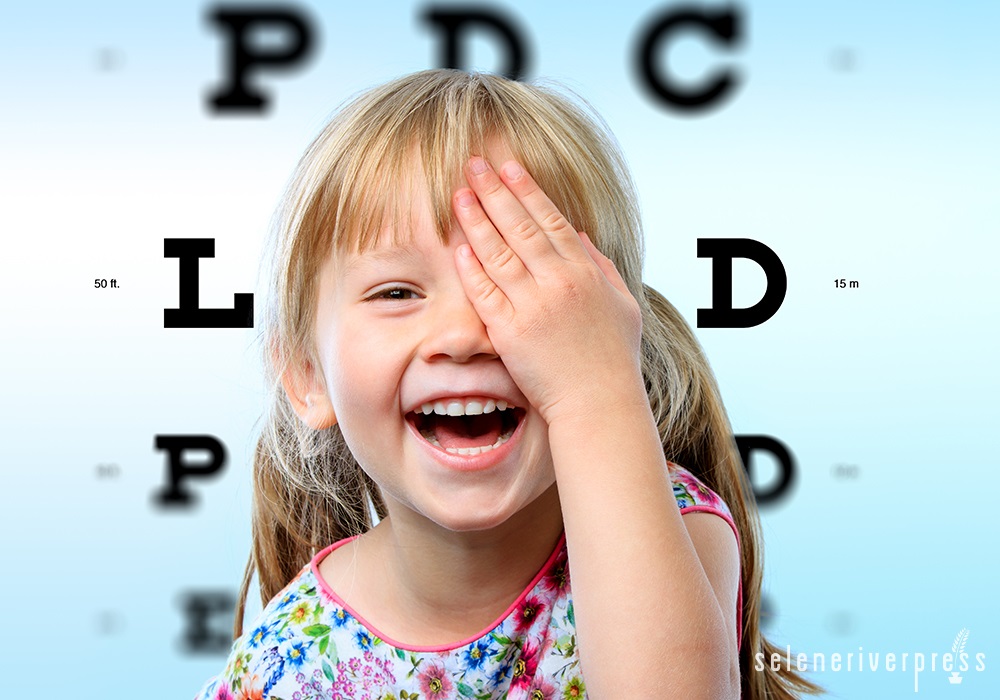Every time our family relocates and we start seeing new health care practitioners, something intriguing happens: one of them always has an important new concept to share with us. Not necessarily new to their field of expertise, but new—as in, none of our other practitioners focused on this particular “thing” before. California is no different.
When I took our boys in for an appointment with our new optometrist, I was expecting the usual. All of your boys are farsighted. These two could use glasses for up-close work. End of story. Thank you for your time. See you in a year or two.
What I got instead was a lesson in extremes. Of course, my boys are still farsighted. But this one is very farsighted compared to that one and, oh, this one is even more farsighted in his left eye than his very farsighted brother. What the what?!
As the sole nearsighted person in the family, and as someone who’s been wearing glasses since the third grade, maybe I’ve been naïve. But I thought you were simply either farsighted or nearsighted? What does it mean to be very farsighted? Time to do some digging and gain a better understanding of exactly what it means to be nearsighted versus farsighted.
The Fort Lauderdale Eye Institute explains the difference between being near and farsighted in a way anyone can understand. It all has to do with the way light is focused as it enters the eye, which is known as refraction. If light enters the eye and is “perfectly focused onto the inside lining of the eye” (the retina), you see the world clearly, and you don’t need glasses. Lucky dogs!
If you’re nearsighted like me, you have a “refractive defect of the eye lens in which the image is formed in front of the retina not on it.” This defect allows people to clearly see things up close, aka near, while far off sights are a blur. Hmmm, interesting.
What about farsighted? Surely it’s just the opposite, but what makes it that way? Farsightedness occurs when a person’s “eyeball is too short, the lens has incorrect curvature, or the cornea is flat.” This defect makes your eyes work harder to, say, read the book you’re holding in your hands. But seeing the road sign in the distance is a piece of cake. (Mmmmm, cake…)
Turns out, only about 35 percent of the population has perfect 20/20 vision, meaning they can clearly see objects that are twenty feet away without any assistance from glasses or contact lenses. Visual acuity is developed at a very young age, but it can start to shift by around eight or nine years old and nearsightedness, or myopia, can surface.
As of 2016, 40 percent of the population was nearsighted. However, because we spend less time outside and more time doing close up work (think screen time), experts expect that number will increase 10 percent by 2050. When that happens, 50 percent of the world’s population will be myopic. And on top of that, a more severe and extreme form of nearsightedness known as high myopia will be the leading cause of vision loss by 2050.
Farsightedness, or hyperopia, which affects 5–10 percent of the population, isn’t always noticed until later in life, when your eyes start to strain from focusing on close up work, sometimes causing headaches, for example. The extreme form of this condition often comes with age. Using glasses or contact lenses to correct your vision and relax your eyes when they need it can play a huge role in keeping your vision from deteriorating further.
Now that I have a better understanding of why glasses are important for two of our boys, I’ll be more diligent about making sure they put them on when they read or do homework. Helping them understand that even though they can’t recognize the benefits now, they’ll be grateful in the long run.
Aren’t our bodies fascinating?!
Images from iStock/karelnoppe (main), demaerre (post).



